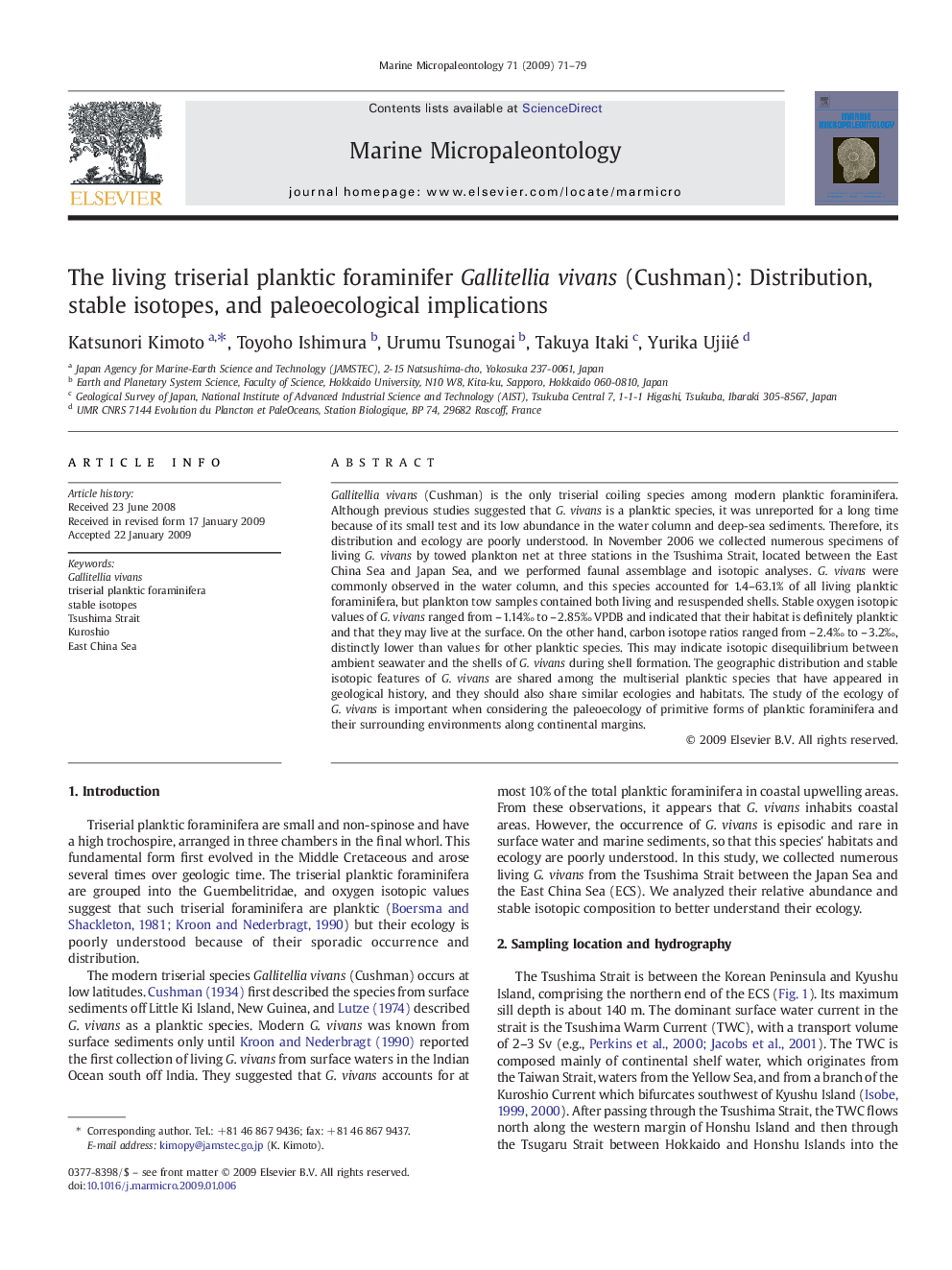| Article ID | Journal | Published Year | Pages | File Type |
|---|---|---|---|---|
| 4749322 | Marine Micropaleontology | 2009 | 9 Pages |
Gallitellia vivans (Cushman) is the only triserial coiling species among modern planktic foraminifera. Although previous studies suggested that G. vivans is a planktic species, it was unreported for a long time because of its small test and its low abundance in the water column and deep-sea sediments. Therefore, its distribution and ecology are poorly understood. In November 2006 we collected numerous specimens of living G. vivans by towed plankton net at three stations in the Tsushima Strait, located between the East China Sea and Japan Sea, and we performed faunal assemblage and isotopic analyses. G. vivans were commonly observed in the water column, and this species accounted for 1.4–63.1% of all living planktic foraminifera, but plankton tow samples contained both living and resuspended shells. Stable oxygen isotopic values of G. vivans ranged from – 1.14‰ to – 2.85‰ VPDB and indicated that their habitat is definitely planktic and that they may live at the surface. On the other hand, carbon isotope ratios ranged from – 2.4‰ to – 3.2‰, distinctly lower than values for other planktic species. This may indicate isotopic disequilibrium between ambient seawater and the shells of G. vivans during shell formation. The geographic distribution and stable isotopic features of G. vivans are shared among the multiserial planktic species that have appeared in geological history, and they should also share similar ecologies and habitats. The study of the ecology of G. vivans is important when considering the paleoecology of primitive forms of planktic foraminifera and their surrounding environments along continental margins.
